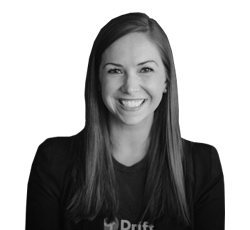How user acquisition impacts churn and how to measure it effectively
Andrus Purde
|
CEO & Founder
of
Outfunnel


Andrus Purde


Episode Summary
Today on the show we have Andrus Purde the Founder of Outfunnel. Outfunnel is a sales-centric marketing automation tool that tightly integrates with modern CRM’s like Pipedrive. You can automate email marketing campaigns, track email and website behavior from click to conversion and get useful insights for your business.
We chatted about the customer development process that took Andrus from idea to Outfunnel and how he created structured data from the in-person interviews.
We also discussed the role of user acquisition on churn and how you can’t do acquisition well without understanding the impacts on LTV.
Andrus also shared the attribution model used at Pipedrive that unlocked insights on their best-performing channels and campaigns by customer lifetime value.
I hope you enjoy this episode!
Andrus Purde
Recommends
Killer user onboarding starts with a storyHow to reduce customer churn with bullet-proof retention [5 steps]Mentioned Resources
Transcription
Andrew Michael
Hey Andrus welcome to the show
Andrus Purde
Andrew thank you for inviting me.
Andrew Michael
It's a pleasure. It's great to have you here today. For the listeners out there. And this we've been chatting for a while but you've got something very, very exciting now launched your new startup called alpha know which you trying to now unite the sales and marketing world, which I'm going to ask you on in in about a bit. But you also came from a background of at pop drive, heavily focused and acquisition, I think you have built up the total marketing team there. And correct me if I'm wrong, it was 20 plus from when you left, and you saw that the early days from zero customers to over 70,000 customers? Did I get anything wrong? The undress?
Andrus Purde
Oh, that's that sounds like me. And, and I had and then weirdly, maybe that way, but I was selling subscriptions already in the end of 2000s. So I was part of Skype. And then I was in charge of scrapes, paid products, paid subscriptions. And that's where I first got involved with the marketing subscription. And also, that's where I first encountered Sure.
Andrew Michael
Yeah, exactly. So one of the oh geez, when it comes to the subscription economy, I think having those early days at Skype. So I'm just maybe you want to just let us know as well. But before we get jumping into turn and started discussing, like, what is it that are funnel does, where you're at what led you to get started on this new journey now.
Andrus Purde
So our funnel, we want to bring sales and marketing closer together. So we're a sales centric marketing automation tool. And it's a stupid idea to build a marketing tool in 2019. Because there are, there are hundreds of marketing tools, and some of them are very, very good. But the fact of the matter is that if you're a small business, it's still super hard. It's ridiculously hard to connect tight marketing workflows into your sales tool and sales data. And then that's what we set out to do last year, will be now going for almost a year and a half. first hundred and 50 hundred and 70 paying customers, five people and then change, change at the there's still a lot of work ahead of us
Andrew Michael
there. And I know you did like a lot of customer development early on before you even got to start lining right of code. Maybe you can just talk us through that process. And like what led you to this aha moment when you said, okay, we really need to fix this, we really need to be able to connect, and help sales and marketing complex together.
Andrus Purde
Yeah, so when I left my job with pipe drive, and just the 2017, I had a vague idea of creating a marketing tool, because I'd see the need, talking two types of customers and just speaking to other entrepreneurs and their old small business side. So here there. I wasn't sure what to build Exactly. And I thought just I do what, what smart people have written in various books. I just talked to customers. And then that was that was actually pretty painful. Because about 3040. tv, I thought that was lost because I was getting insightful conversations done. But they didn't for many patterns. So I thought based on that, that would have needed to be about 10 or 20 different products. But luckily had their own their 3040 interviews mark, these patterns started to merge, and then some trends started to come out of it. And then truly, that really that one spirit of talking 210 120 companies that still useful today, and the product company marketing in picking messages. So So yeah, definitely. It wasn't the time time it was time well spent.
Andrew Michael
Absolutely. I think it's good as all that you persevere, because I think that's a lot of the times as well. Like as entrepreneurs, you you want to get started, you've got all this energy, you just want to do stuff you want to start executing. But more often than not, it's definitely going to be the wrong idea. And really sort of like having that discipline to focus and to be able to pick out the ideas and to pick out the problem that you're really trying to solve is definitely the first to building a business where turn is not going to be an issue.
Andrus Purde
Yeah, for sure. Yeah, I think you're persuading but also creating structured data out of this integration, making, getting pretty good at it. But getting pretty satiric about note taking is useful as well.
Andrew Michael
Interesting, like, how did you go about getting structured data out of these interviews, then? So it's quite a lot of data that you're sitting on typically like conversations as well, and interviews, I know they end up tend to get lost, like what is sort of your process there that how did you sort of get structure out of it and start to see these patterns emerge?
Andrus Purde
So after about, so I took notes of all the conversations. And then after 10, we individually and I thought I'm not gonna remember what to look for and what to look for. If I do another 10 interviews, I thought, what are the most important things were I? Which questions to Why do I silently kind of Express inner joy? I just be getting the responses. And some of the questions. I think one of the questions was like, what, what tools to view? One question was, what's the main challenge in marketing and sales and marketing? and other one was just what's what's what's really juicy piece of insights from this conversation? And there was one more question and then I just made sure that to they filled in, and I summarized the answers to these four questions after every interview. Some of it was multiple choice questions, I'm going to just kind of a short sentence based on the whole interview. And that's this, it was almost like tagging the conversations in some way. And that was really useful. I
Andrew Michael
actually came across a really interesting tool the other day, it's called otter.ai, I think. And what this tool does for you is it allows you to upload transcripts where you can actually connect it with some of your tools like zoom that you do for conversations, and it automatically creates a transcribe of that conversation automatically tags different people because and then it pulls out keywords for you from that conversation. Which I think like it's it seems like it could be a super valuable tool, when doing sort of this discovery work or sort of doing customer interviews, I think it's often the challenge is that you end up spending a lot of time doing interviews, and then to actually try and get something really useful out of it. It just takes almost even double the time sometimes afterwards to analyze and run through it without some sort of just thinking.
Cool. So I wanted to talk a little bit today about acquisition, we've talked as well previously on the show quite a bit as well of the prevention versus cure, and really trying to make sure that you have really good incentive your customers. So we've talked through that quite a bit. And having a good understanding will then lead to sort of how you go about marketing your product and how you go about delivering value to them. Today, I wanted to touch on with you as well, because obviously your career has been on acquisition. You've helped like mentioned previous the build up pipe drive from zero to 70,000 customers. When it comes to churn and retention. How much of a role do you see acquisition playing in churn?
Andrus Purde
I think it's I think, when you can't do acquisition when without being mindful of churn. And I'm not just saying that, because that's the name of the podcast.
But so the might might, my earliest
experience at Petra, Richard was that I think we we had raised a seed round, we hadn't really raised in $1, yet. But we had that we had invested enough money into pay channels to really make a decision about which channels to invest more into right timing for day round, and which ones to keep on the back burner. And then I looked at all of our marketing channels, and then leech generated, and then new podcasters generated. And then for some of the channels, we looked at it by keyword, and by by kind of sub channel, and saw that there was like huge differences between how profitable our marketing channels were. And there was a slight difference in ARPU between the channels. But the biggest difference was, was that the retention between different channels and even between different keywords of channels, was substantial, it was huge. So that really, that influenced a lot of the marketing strategy going forward. So we mean, you have to tie everything back to LTV, and then and churn is the biggest, probably the biggest lever in LTV. And then and then I think looking at, so you can't look at sophistication if you if you if you don't think that it through the through through torture, and you have to be managing children in order to really grow Medicare self, your child.
Andrew Michael
Yeah. So it also what you said as well, that was quite an interesting idea is that you essentially you are seeing, in some cases, the same average revenue per user, or average sale price. But then in actuality, like the LTV is where it really started to kick in. And it really started to make a difference.
Andrus Purde
Yeah, like with this like this, like a like sick, I think. So there was a huge difference between context as well as keywords with some exceptions, but I think I think, if I remember correctly, then, Jay, when he was one of these countries where where we had comparable ARPU to most other countries, but then the retention was 70%. Higher. Just the people who came there was not as many of them, but the ones who came were really sticky.
Andrew Michael
The Germans are missing around.
Andrus Purde
Yeah, so let me just going to say, really, comfortably increase our beats and our aggressiveness in that market. Because we knew that. Okay.
Andrew Michael
Yeah. Cool. So I think I mean, this definitely, it sounds like a very interesting idea. But it's often not the easiest thing to accomplish, to be able to understand. And when we start to think about so we're talking about the concept of attribution here. But we're not only talking about attribution when it comes to sign ups or customer but actually LTV, the end, how did you go about getting a system like this setup to begin with, and at what stage was the company when you realize, okay, like, we spending way too much money now on marketing, not to have a good system in place to understand this.
Andrus Purde
So an alpha system was super basic. And of course, it will evolve as we as we as our budget things, budgets increased and those are resources increased. But our first session was very simple. I had the lucky foresight to, to tag our own new paying customers with a china keyboard from the very early days. So by the time we started to have some amount of money to invest in marketing, we were they had accumulated some useful data.
Andrew Michael
And when you say tag them, how are you doing the tent?
Andrus Purde
Just just we had the UTM UTM, added two tracks, and then we had a I think that saved a shed to the database when somebody created an account.
Andrew Michael
Okay, very cool. So you actually had this as part of your production database for accounts was a field that stored
Andrus Purde
losses, so each each account had they had a channel and compare UTM? Actually, from day one, we weren't that smart. But from from my from from early on, and then, but then it wasn't me. But if you break it broke it down by channel, and by country, it wasn't that statistically significant. But you could seem to see some trends. And then the the lyst version of the LTV calculation was a super like I take the Google spreadsheet, I, I had all the different keywords, the different roles, and I just had an exploration of their revenue. And I curated months altogether. And then church, or how many of these were still retained in these columns. And, and even despite not having full data, you could still see some some key words were performing better than others in terms of retention and the LTV. So the first was, it wasn't statistically significant, it wasn't something you could put on a slide, but you could make decisions based on that, you could say that, okay, we probably should invest more here, and you probably invest less here. And then each next iteration of the same process became more accurate and more scientific. But but you can start pretty scrappy, I think.
Andrew Michael
So, essentially, actually started this so much from day one. That's super cool insight that you had and
Andrus Purde
have two great wishes, what from day one? I wasn't that What was that? It wasn't too late. But it was it was a pretty Oh, yeah, that's pretty early on.
Andrew Michael
So then you started out, did you start to get to the sort of next level of sophistication when it came to the way you were measuring this. So in your database, then you'd move to the Google Sheets was the next iteration that you went, and you took it to?
Andrus Purde
I think the next iteration was just the same version. But But, but better. And with more data, and then we move to our own data warehouse at some point. And then this, this just removed human error and made the calculations more accurate because everything was done in a formula. While in the first version, it basically just added indices of like the looks like I added weight, to based on my attention of our lifetime value with a to invest list of more. In the last version, it was all expressed in a formula, and I didn't have a way to interfere in the numbers. So just kind of whatever came up to the system was our top 10.
Andrew Michael
And so this system that you built, then it sounds like it was his last touch attribution. Is that correct? Or
Andrus Purde
we used first touch, which I think makes sense for most early stage companies. Because I think last time, last stage tonight, to me seems more relevant. If you if you're in a category where the category awareness, you saw, you know, the brand awareness to say. So let's say like travel is good, I think for everything else, all the airlines and all the hotel site. But I think for software, essentially an earlier stage software. It's really the the the agenda would put you on the radar, which I think is the most important. But I think this is a topic that can be debated for hours, if not days.
Andrew Michael
Absolutely. I think that as well. Just to add on to that point, I think with software specific like the SMB space, and if you have a free trial or a freemium version, the barrier to entry is so low. So typically, like you tend to see that first touch is predominantly the touch with signups are coming from most of the time is right. And if you saw that similarly, app drive,
Andrus Purde
yeah, I mean, we were selling to SMB. So the decision process is not so too complex. Many, many trials lineups were coming off of the first visit, and definitely different the few selling enterprise or especially, I think if I was a marketing, Salesforce, Salesforce, I enjoy HPB high proliferation already. I think their last it would make more sense probably. Because what what channel to get it to truly take action.
Andrew Michael
Yeah. So when you started looking at this, then so you said, okay, we need to make sure that we have really good attribution so we can understand which channels are performing best, you looked at keywords you looked at countries was anything to do with the specific campaigns that you worked on that you notice, like thinking about the different types of messaging or focusing on certain use cases? Did you do any, like research into that area? And trying to understand like, what copy was driving conversions, and LTV?
Andrus Purde
No, we didn't get to that level of detail. But I think even even the country and keyword level can be can be super insightful. And did you do some research, if you do any research? alongside doing acquisition campaigns, you just, you will continuously improve the messaging and have a have a have a mental image of the jobs to be done in mind and then connect them to certain keywords. And then you can you can then just kind of put these two things together.
Not in a in a fairly linear way. But just mash mash them together. And and then driving insights from Baker bench to the research and messaging and from your researchers for back to compete.
Andrew Michael
Yeah, absolutely. When it came in as well to different acquisition channels, you mentioned in mediums. So did you ever look into the effects? You mentioned different channels have different LTV was like word of mouth, a big channel for yourselves previously a pipe drive or even it's Skype? And how did you go about sort of understanding the impact of word of mouth when it came to LTV?
Andrus Purde
So word of mouth was definitely
important for both Skype and quite job. I think any product which I've been involved with, I just realized one day that that I tend to only market products which don't need marketing. I think also, I think I can also then add to that it also like to only work with people who don't need management. So I think if you do, if you do these two things, then you just get to work on more interesting problems. But, but back to what the mouth. definitely important. And it's certainly a channel, I think it just just that the good product has some built in morality, almost by by design. And then as a marketer, you can't really you can't, you can't drive it as much as the team can drive it. Yeah. But of course, you can influence it, you can build with other programs, you can make sure that the messaging is clear. So it's easy to tell your friends about it. And they are the small things you can do. But do con it's not really something about corner marketing channel.
Andrew Michael
Yeah. Did you see the like any difference when it came to word of mouth versus any of the acquisition channels when it came to actual retention rates? And the LTV overall? Was there a difference?
Andrus Purde
Yeah, we did look at the difference. But it wasn't actionable. I mean, because you can't do much with the data, you're just going to observe and say, all right, we need more of this, but there's not, you can't put there's no lever attached that that you can pull. Apart from that from just that, I think, yeah, there's more things you can do. Small big things you can do as a marketer, but it's really the hands of the product, mostly. Cool. So
Andrew Michael
let's dive a little bit more into our funnel now. And at that intersection now between sales and marketing, maybe you want to just talk us through what a typical use cases and how somebody would use your tool today.
Andrus Purde
Yeah, so if you're a more established business who's using something like, like Salesforce, or even HubSpot, you wouldn't even know what I'm describing. But different small business who use these tools like pipe drive, like maybe MailChimp, and some of the other SMB focused marketing automation and taste tools, then these tools are still despite the availability of the theories and trays. And and API's, they're very hard to connect, if you're a small business who's not the software company and without to develop development resources. And then it's, it's silly, but if you if you're a salesman, you didn't, you didn't, and then you're working in pipe drive, and then your marketing team is sending campaigns from MailChimp, or Constant Contact, then you don't have access to data about which leads have interacted with marketing, which ones haven't, who has been to the sites and what they have looked at and, and who hasn't come to the site, yet. So it's bringing these these sorts of information to the sales team, and also our funnel, easier for marketers to make sure that the campaign targeting is accurate. Because the moment you need to export and import the data manually, from one to another, you know that you're gonna be able to date by the time you, you import it. And we automate it. And just make sure that if you bought something, right now, you won't receive an email in five minutes to buy what you just bought. So keeping data in sync and giving salespeople context about leads is what he's what we want to do.
Andrew Michael
Yeah, and I'm sure that's going to be something super powerful as well. We talked a little bit about before the call, but making sure that you're lining so the promise fit from marketing with the like the sales fits him actually, that the end of the day, what the product does, is super critical. You don't want to be marketing, some message and then your sales team pitching different features, like really having that context of knowing what people have seen. And what they've visited and done before I've been to that sales person, I think can be a super powerful position to not only just to close more deals, but also to make sure that customers are getting the value that they were looking for to begin with, and the value that attracted them through the marketing there. And I think even even something guys, as
Andrus Purde
mundane as on subscribing of a marketing innovator can be a signal for sales to to take some action. So why did somebody unsubscribe? Was it because marketing messages were poor? or emails were boring? Was it because they had already made up their mind to buy your product that they didn't need any more information? Or was it because they want had made the decision to to buy a competitor's product? And if if we didn't give this data, but unsubscribe, so even bounces to the sales team, as soon as if they happen, then you just may be missing out on sales opportunities? Absolutely.
Andrew Michael
Have you seen like it with some of your customers now as well? Like, what are some of the early responses coming back from them? How have they found success using the tool?
Andrus Purde
They're ecstatic.
we started, I started started doing the research year and a half ago, sensing that there was a problem that despite all the tech, it's hard for SMB to connect their sales and marketing workflows. As we built the first version of the product, which we knew that we were solving a problem because we didn't have much of a product, but we were people, we had people paying for that already. And as we have going to widen their offering, we still solving the same problem. So I think we've seen how how it make can make life a lot easier for both salespeople and marketers, if you just make it easy to connect the dots and data. Maybe but But back to you I think back to the topic of the podcasts. The one thing which I've noticed, as when we when we onboard customers, he said we have a we have a 14 day trial, and most of our customers are paying by month. So we haven't promoted our annual plans that aggressively. Yeah. And one thing I've noticed is that is the onboarding doesn't stop at the time when somebody has decided to purchase your product, the card details,
especially when you send it to us and beach with low price points is with you. To me, I think onboarding and providing value of about the product really happens around day 50 or day 75 or so when when you've paid for product already. twice, so maybe three times. Yeah. And when you've started to get devalue the product, and also validated that, hey, this is value, which is good enough for me to to continue paying for that. I think in my previous roles, I've sometimes said treat it like if somebody is paying Good move on, let's get more customers. But the experience that by Trevor, now recently adult fandom has taught me to really just not consider onboarding done before somebody has started to start to add value, and then stayed around, stuck stuck around to getting that value for at least like two payments. That's why I think you can point to that at the mentally exhausted by not just like not just like an inactive for list.
Andrew Michael
Now once I've started to really create good habits around your product, I think that's something that came up as well in the previous episode where we had this year of comedian who actually builds onboarding software. And also what they what we discussed in that episode was that onboarding is often treated as like you say, like those first few days trying to get them to use x, y, or z feature. But onboarding actually continues throughout the lifecycle. And what we might sort of think of as product announcements when products are being updated. In actuality, it's onboarding in its own writers or because you constantly want to be making sure that people are using your new features are being activated are being continuously delivering, and you're constantly delivering, and they're receiving the value. So it's interesting that you bring that up, it's definitely something we've discussed before as well.
Andrus Purde
Yeah, and I think, I think also just some simple simple things that any SAS company can do is, if you have this kind of moment, the first payment, some customers who are who are making their first payment, they are fully on board, they're using all the shares, they enter the data, they're going to go in at full speed. But quite, maybe 50%, of which I've seen in different companies have new customers are somewhat committed, but they haven't had the time to really invest in it. And maybe some tool has been not integrated yet. And maybe some teams have not been fully brought aboard. And maybe the maybe there's some anomalies in the system, which doesn't quite work as it should. And so I think calling these people or emailing these people at a time with a fair statement, or immediately officer who haven't properly started to get by go to the product, is probably the most profitable thing you can do as a company, because you're talking to super warm leads, who have almost made up their mind. And we just need a little nudge to get on the right track.
Andrew Michael
I love this, I think as well. A lot of the time when you think about sales or customer success as well. The focus is getting to that sale or making sure that the customer but what you're saying makes total sense as well as if you really think about it from in whatever space you're in. But in SMB is probably even more says like, these people are incredibly busy, there's so much going on that your tool is not the center and most important thing in their lives or in their work day. So even though they may have already paid you for the first time, they might not have actually really got what they needed from you up until that point. What What led you to this insight? And is this something that you've set up now, at our funnel?
Andrus Purde
Yeah, we're trying to get it done. But often that is a very simple organization was by people to Yeah, so it's super competitive up here. But I first started thinking about it that pipe drive because it started as a as a self service only business initially. And then we added the sales function function many years later. And then selling selling to the west MBC. globally. Again, some countries, sales are going to inbound sales is a very profitable activity, but other countries, it's not. And then you need to decide where do you Where do you focus your sales time and sales resources? And then and then I think the topic of aligning sales and marketing efforts also came up very accurately then, or acuity attack correctly. Yeah. And then I think just that whenever we discussed efficiency that calls to people that have kind of both, but haven't fully both, that's the most profitable kind of call we could make. And then yeah, that's, that's stuck. That's stuck in my head ever since?
Andrew Michael
Absolutely. I mean, they're really showing the commitment. They're like they put the money on the table, but it's not just helping them get over the edge and making sure that they start to get the value. Yeah,
Andrus Purde
I probably think it's easy to map out the key features. Of what what constitutes for an active, fully engaged customer. I would think I'd be very surprised if it was more than 50%, who are going to fully active and fully engaged at the time of the first payment.
Andrew Michael
Yeah, I think this is something we talked about a lot in terms of like, how do you define active users versus non active and like, especially during that onboarding stage? What do you think is interesting is at the next level is really a key, even though you have this concept of activation, like how much does it really correlate into people becoming customers? Because a lot of times, like the activation metric is really tied back to retention and looking Okay, if they take these actions, they're more likely to be retained. But I would be interested as well, just to understand that first payments, like how many users are actually active at that point?
Andrus Purde
Yeah, and I think for us, it's it's between 30 to 50%, depending on where you draw the line. So 3050, 50% are are not active, right? We're not here yet. So it's better, I think, was our product as a very low price point. The price point, so it's an easy to just do it. I just had my coffee, there's a few little data. And then 15 days later, you either have figured it out, though, just cancel.
Andrew Michael
You just yeah. And I think that's as well, like some, it's probably one of the more dangerous areas when it comes to churn is the sort of segment of users that are paying but they're not receiving the value. And quite often they're not as well. It's something that's overlooked. And it's sort of like if they're paying, what's to worry about it. But really like this, where it comes into making sure that you not only are people sticking around with us and paying us but how engaged are they? And that would sort of give you a good indication of how healthy the business is really, it's not a payment per month, because at some point, if they're not using your tool, they're going to stop, they're going to remember, oh, I have a running payment. Now the last few months. I haven't used the tool, it's time to cut it.
Andrus Purde
But I do have you looked into what's what's a healthy rate of completely dormant paying users for a SAS company?
Andrew Michael
Not yet. And I think that's something that would be an interesting challenge to look at. I think we've talked about when it comes to sort of delinquent churn In the previous episode, actually, with Patrick from profit. Well, we talked a little bit about that. But we haven't actually looked at what sort of governments what percentage of customers are dominance and paying. And it's definitely something we want to try and find somebody if anybody's listening to the show, and they have anybody that we should be speaking to about it, I'd love to speak to
Andrus Purde
why these things which people are very comfortable talking about. It's a scary topic. So maybe like maybe there needs to be an anonymous app where you add your end of what percent of users is paid, but not using the code. So yeah. And then you see everybody else's results, and anonymously.
Andrew Michael
Yeah, for sure. I think that's definitely something to set up pretty soon start circulating as well with the previous I guess, I think, as well, that that's a problem that's exaggerated when it comes to yearly plans as well. Because more often than not, we sort of think, okay, yearly is the way to solve for Chen retention, and it does end up seeing like a really good increase. But again, with yearly, you still face the same problem, you just face it 12 months down the line instead of two or three. Well under this. What is the next steps now for our funnel? Like you mentioned, your five people today? growing quite well, hundred and 25 customers like what is the next six to 12 months look for you look like for you and the team?
Andrus Purde
Just think, continue working on the same problem connecting to the marketing tech stack and expanding on offering and just building the product and building the channels, which will customers discover the product. That's really life at this at this very early startup stage is pretty simple. You just need to go where they're going across the winter, for the longest it tells you takes you. Yeah, I think it's it's early after you're maybe 3050 people and then things get more complex. But the prospect is easy or not.
That easy, but it's simple, but hard.
Andrew Michael
Yeah, I think that's one thing like slowly learning more and more now amid hot jar as well, as you know, I had my own startup previously. And it the early days, like when you're getting started, you think things are tough and difficult. And then the more the company grows, the more you realize the problems just grow with the company. It's something that's like a daily days you think if I can just get to that next milestone and the company's like, cash flow positive, and that's when I can relax, but and that's when the problems just start piling on. And as you scale they just come with it. Sounds like it's a never ending cycle. Definitely, like you said early days now you need to enjoy them.
Andrus Purde
They are exactly and if any listeners, are they using pipe drive as a CRM, and they want to marketing workshops to that. Please look us up and check us out.
Andrew Michael
Yeah, absolutely. Definitely, for listeners, you should check it out. And if you have any feedback on this, as well as liquid guys, obviously, as you heard open to hearing from yourself. And just thanks very, very much for joining the show was great having you great chat today. And I'm sure the listeners are going to enjoy this episode and get a better understanding of how they can focus their acquisition efforts to decrease churn.
Andrus Purde
Excellent. Thank you Andrew Thanks. Have a good day. All right.
Comments


Andrus Purde

A new episode every week
We’ll send you one episode every Wednesday from a subscription economy pro with insights to help you grow.
About
The show

My name is Andrew Michael and I started CHURN.FM, as I was tired of hearing stories about some magical silver bullet that solved churn for company X.
In this podcast, you will hear from founders and subscription economy pros working in product, marketing, customer success, support, and operations roles across different stages of company growth, who are taking a systematic approach to increase retention and engagement within their organizations.

































































































.png)


























































.png)








































